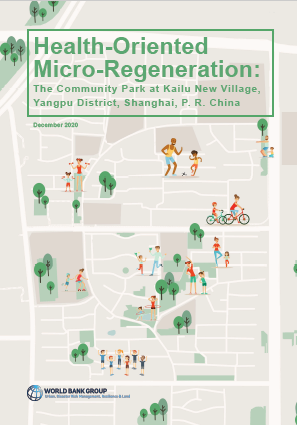
-
Country/City
Shanghai / China
-
Published On
January 19, 2021
-
Author(s)
The World Bank
The pursuit of health and wellbeing is crucial for human society, and has been listed as one of the UN’s Sustainable Development Goals-SDG 3. Evidence has shown that conditions in the urban built environment have significant impacts on public health, with varying effects on communicable, non-communicable and psychological diseases. Understanding these impacts could better integrate the consideration of health in urban planning and design. Infectious diseases such as cholera and yellow fever are related to factors such as street sanitation, housing conditions, and the quality of the sewage system.
Noncommunicable diseases such as cardiovascular diseases, respiratory diseases and diabetes are determined by the lifestyle and working status of local residents, which could be shaped by urban transportation system, housing and green space. The correlation has been increasingly recognized between mental illness and aspects of the built environment that include crowded housing, noise, and the absence of nature. Conversely, urban space that promotes social interaction, for example, is conducive to alleviating psychological pressure. Health interventions and the enhancement of the built environment through urban planning and design can help reduce the risk of disease among a large population.
Download
4.46 MB
